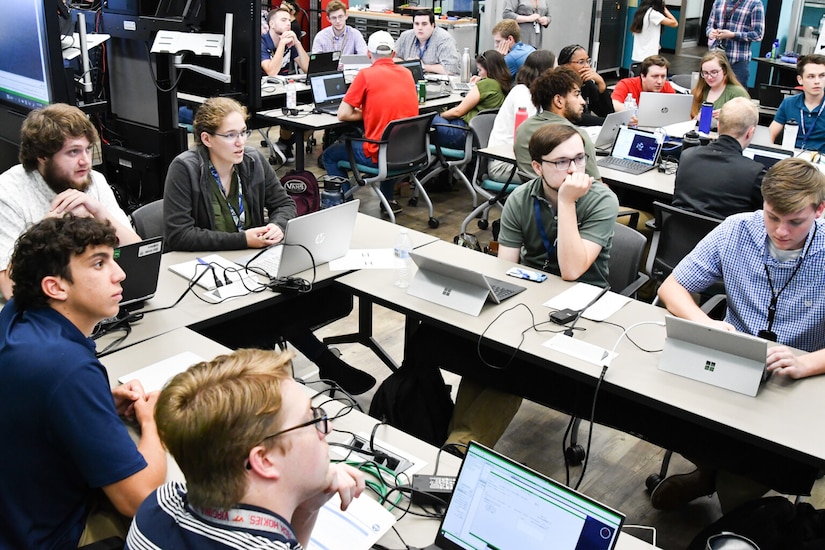At a recent panel discussion on government talent acquisition, Brynt Parmeter, the Defense Department’s chief talent management officer, underscored the urgent need to attract members of Generation Z to civilian defense careers.
The panel convened yesterday to discuss solutions to an emerging problem: A large portion of DOD’s civilian workforce is approaching retirement age, forcing its agencies to adjust how they recruit and retain early-career professionals to fill the void.
“If we don’t get more Gen Z members into this workforce, we are not going to be able to accomplish our mission,” Parmeter said.
Parmeter was appointed CTMO in April 2023 — a position created to address DOD’s evolving talent management needs. The department, which encompasses 60% of the federal civilian workforce, must not only fill thousands of essential jobs across fields like cybersecurity, logistics and engineering but also reform its hiring approach to resonate with younger applicants.
According to Valerie Capers Workman, an industry expert who joined Parmeter on the panel, Gen Z values job stability, meaningful work and comprehensive benefits.
“For the Gen Z cohort, there is no more attractive space right now than the federal government,” she said.
Parmeter agreed, noting that DOD civilian roles, which offer robust retirement packages, competitive health care and an opportunity to contribute to defense in a non-uniformed capacity, are uniquely suited to appeal to a generation that values public service.
However, Parmeter explained that many young professionals “didn’t know” about the civilian roles within DOD and often equated careers in defense to military service. Overcoming this confusion and communicating the breadth of opportunities is paramount to federal agencies in search of Gen Z talent.
Last spring, Parmeter launched a pilot program to attract 300 cybersecurity professionals in line with the department’s 2023-2027 Cyber Workforce Strategy Implementation Plan. As part of the program, DOD partnered with workforce development intermediaries, civilian companies, non-profits and universities.
Following the pilot program, 88% of candidates reported that they were “very” or “extremely” interested in opportunities within DOD, even though 80% revealed that they had never applied for employment with the department.
“Through the outreach, we ended up getting 6,000 eligible and qualified applicants,” Parmeter said. “We realized people want to come in and work for the federal government.”
However, the department cannot offset its impending manpower shortfall with awareness campaigns alone. Parmeter admitted that DOD is still hamstrung by complex, decades-old hiring regulations.
“There are 43 steps in the hiring process,” he said. “And 34 are mandated in congressional statute; we have to comply.”
In response, DOD officials are exploring opportunities to work with the House and Senate Armed Services Committees and draft legislation to evolve the compliance-based steps standing in the way of talent acquisition.
The department also aims to leverage partnerships with job platforms, integrate artificial intelligence for resume matching, and shorten the overall timeline from application to offer.
“We want to make the hiring process more user-friendly for the job applicants and for DOD,” Parmeter said.
Parmeter noted that generational challenges could also be discouraging candidates from pursuing DOD careers. Long-tenured hiring managers still expect 30-year commitments from Gen Z applicants. Parmeter argued that his generation’s perspectives fail to capture the interest of emerging professionals.
To reconcile these perspectives, Parmeter suggested a fluid approach: allowing employees to “rotate out” into private-sector roles to gather expertise and then return to federal service. “We want to amplify and tell our stories,” he said. “Including stories of those who join, receive advanced training and then leverage that expertise in other sectors before returning to public service.”
The 2022 National Defense Strategy reinforces this stance by encouraging the department to “increase the availability of fellowships, internships and rotational assignments” to build a more adaptable, experienced workforce.
Parmeter concluded the panel discussion by challenging government employees to inspire young people to join their teams. “Take 10 minutes to rethink how you describe your role … and translate your excitement into a language that resonates with the next generation of public servants.”




